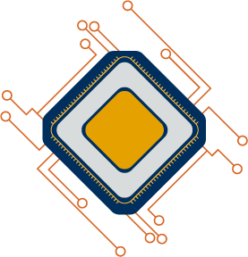In the decision G1/19 the Enlarged Board of appeal discusses some decisions regarding simulations. The following decisions are mentioned under points 40 to 42 of the G1/19.
Simulation of an electronic circuit
Case T 1227/05 concerned a resource-saving numerical simulation of an electronic circuit subject to 1/f noise. The relevant claims entailed calculating an output vector of the circuit on the basis of a model, an input vector and a noise vector. Starting from T 641/00 (COMVIK), the board considered, inter alia, that the simulation constituted an adequately defined technical purpose for a computer-implemented method, provided that the method was functionally limited to that purpose (Reasons, point 3.1). The performance of the electronic circuit’s components was described by differential equations and did constitute an adequately defined class of technical items, the simulation of which could be a functional technical feature (Reasons, point 3.1.1). A technical effect was acknowledged for the simulation even though the claimed invention did not incorporate the physical end product (Reasons, point 3.4.2).
Limit value for an operational parameter of a nuclear reactor
Decision T 625/11 followed the reasoning of T 1227/05, albeit only after discussing counterarguments in detail. The case concerned a computer-implemented method for establishing a limit value for an operational parameter of a nuclear reactor on the basis of a simulation of the reactor. The calculation of an operating parameter of a nuclear reactor on the basis of a simulation was held to contribute to the technical character of the invention, even though the use of the limit value for the operation of the nuclear reactor was not claimed (referring decision, Reasons, point 37; T 625/11, Reasons, point 8.4).
Amicus curiae
The amicus curiae briefs favouring the patentability of numerical simulations as such mainly rely on the two decisions cited above. It was submitted that the small number of decisions on the patentability of simulations may be related to the fact that applicants often choose to avoid the critical issue – the intermediate hurdle as described above – by claiming steps that clearly provide a technical effect as an output of the claimed simulation. For example, T 1842/10 noted that modelling or simulating processes aimed only at gaining knowledge about the functioning of a real technical system did not serve a technical purpose. This conclusion, however, was not decisive since the claims according to the then pending main request filed during oral proceedings, included features clearly of a technical nature (T 1842/10, Reasons, point 5.3). In particular, the method claim under consideration comprised a step in which the computer controlled an influencing device such that a real steel volume was influenced (EP 1 711 868 B2, claim 1, step l; see also Reasons, point 40 of the referring decision). The applicant/appellant in T 625/11 chose a similar approach: the claims of an auxiliary request included a step implying physically controlling the real nuclear reactor underlying the simulation (T 625/11, point XII).
